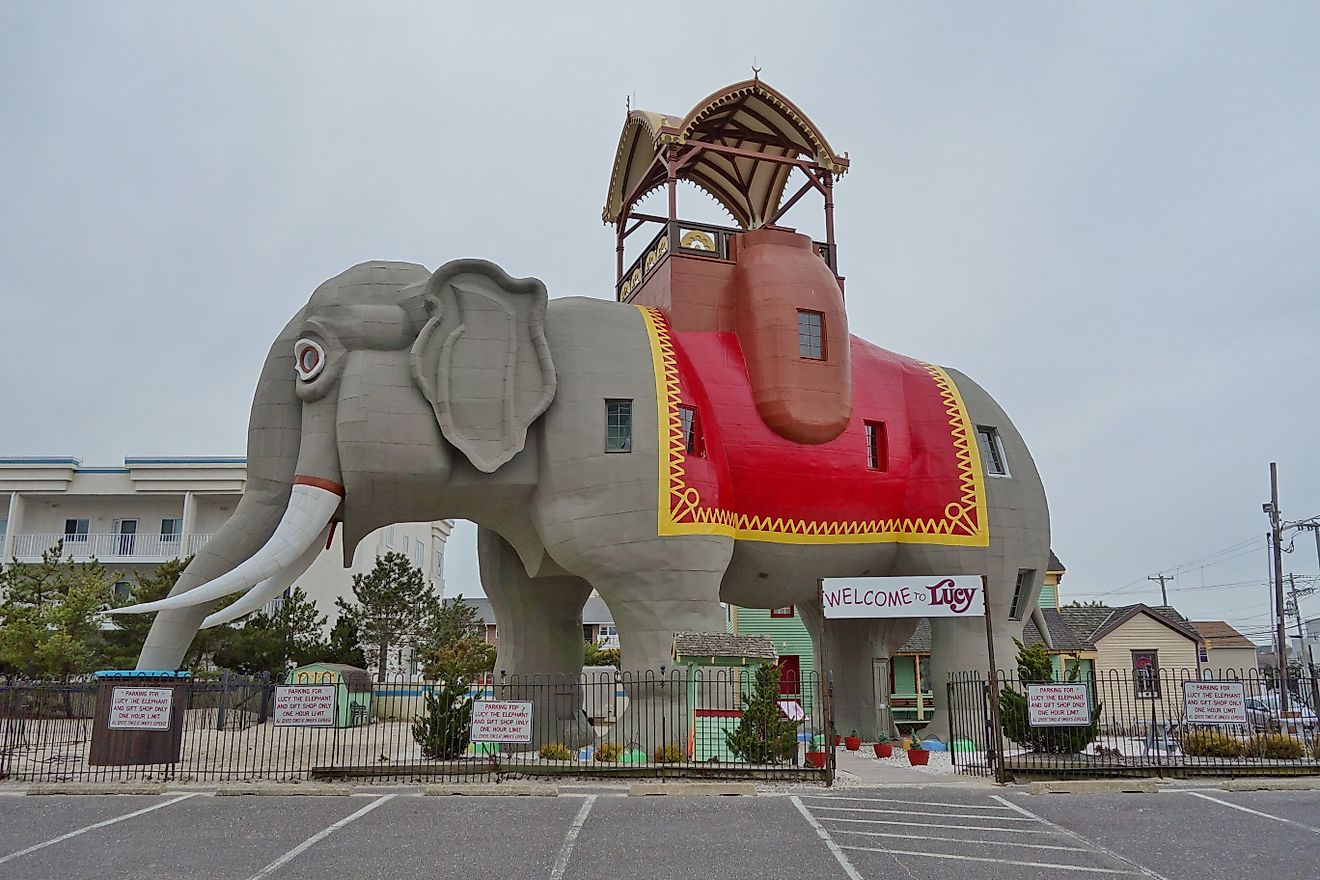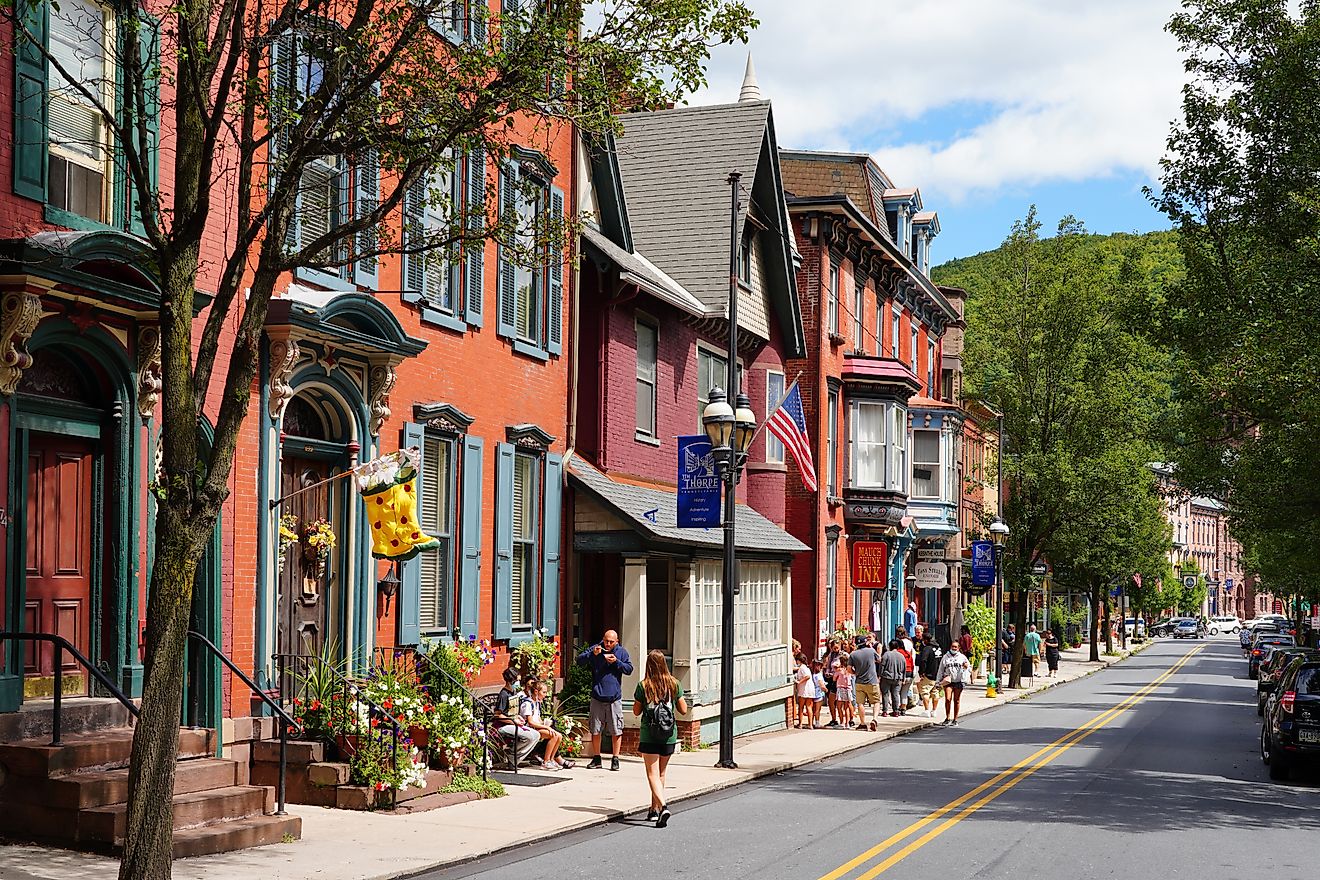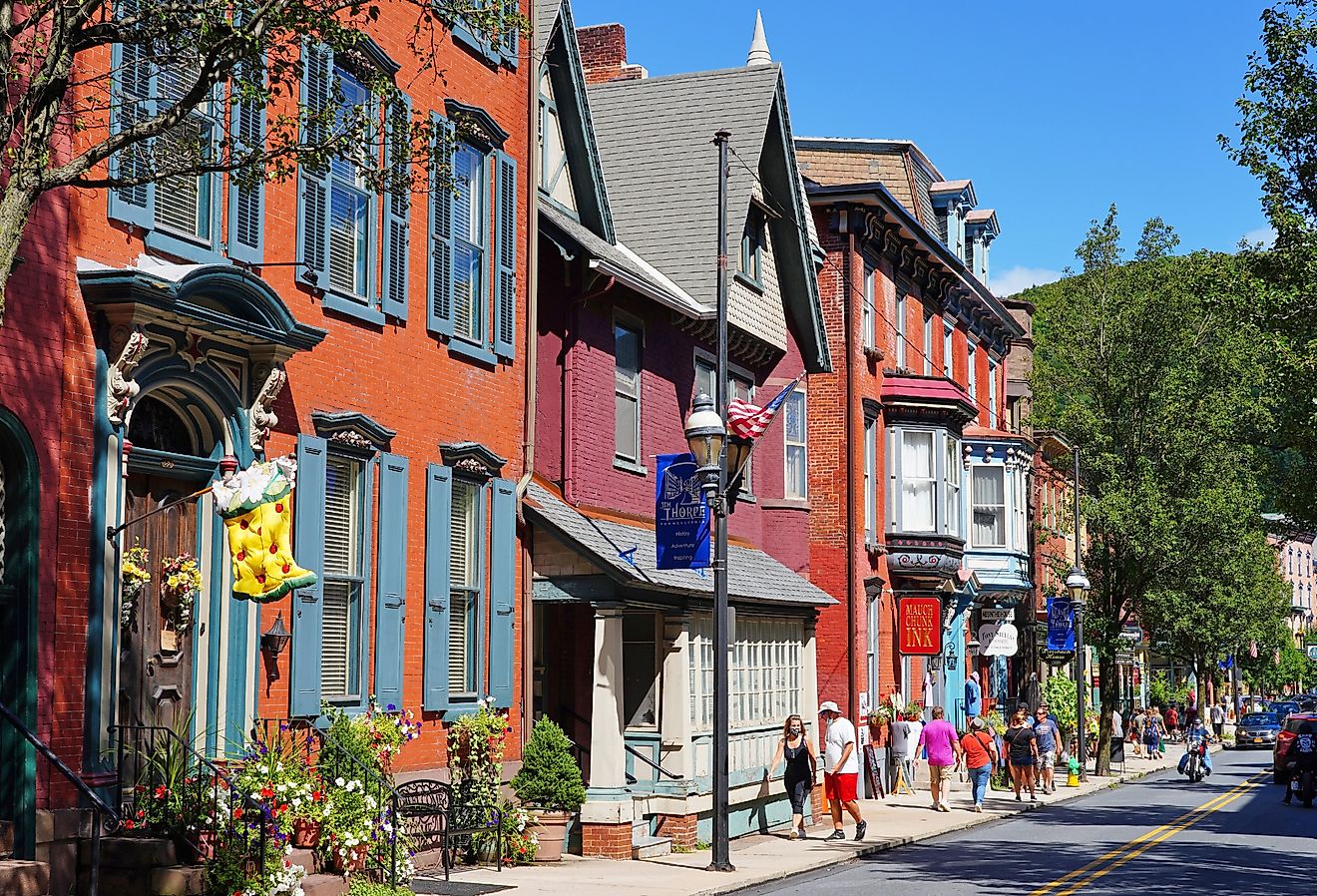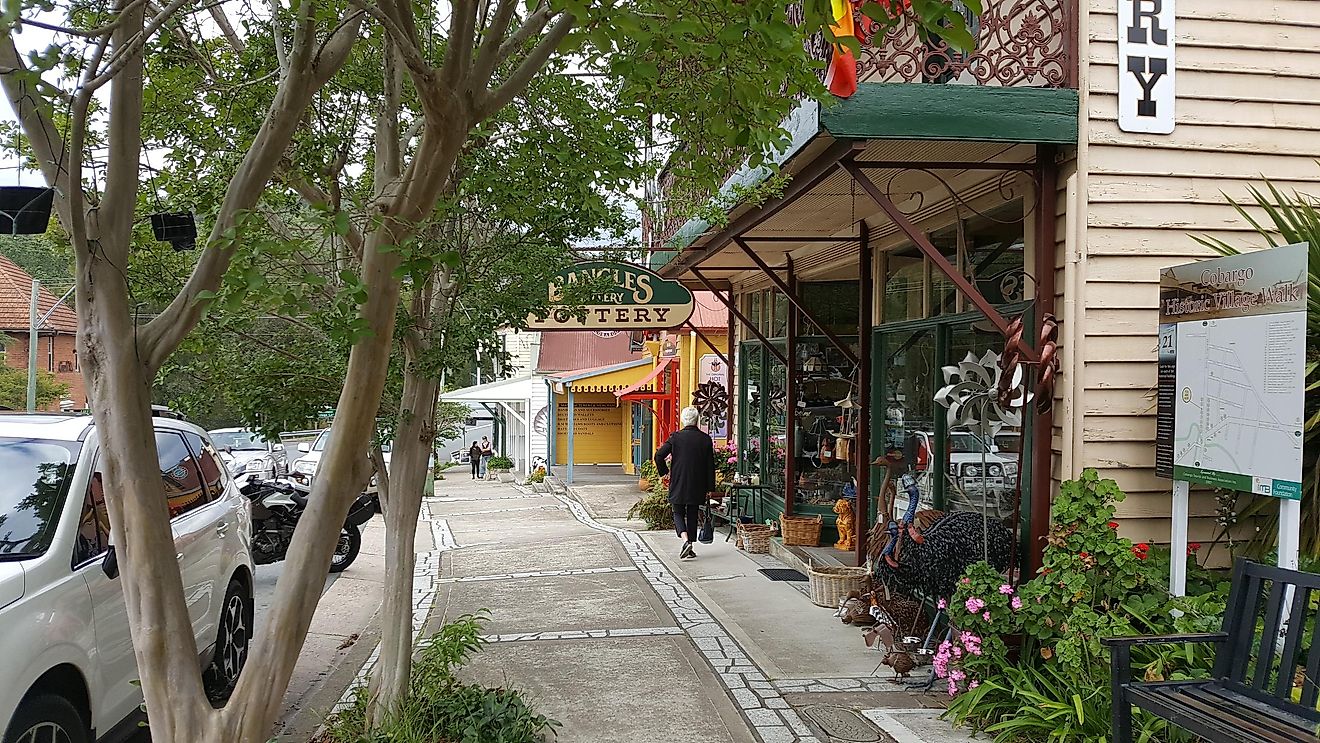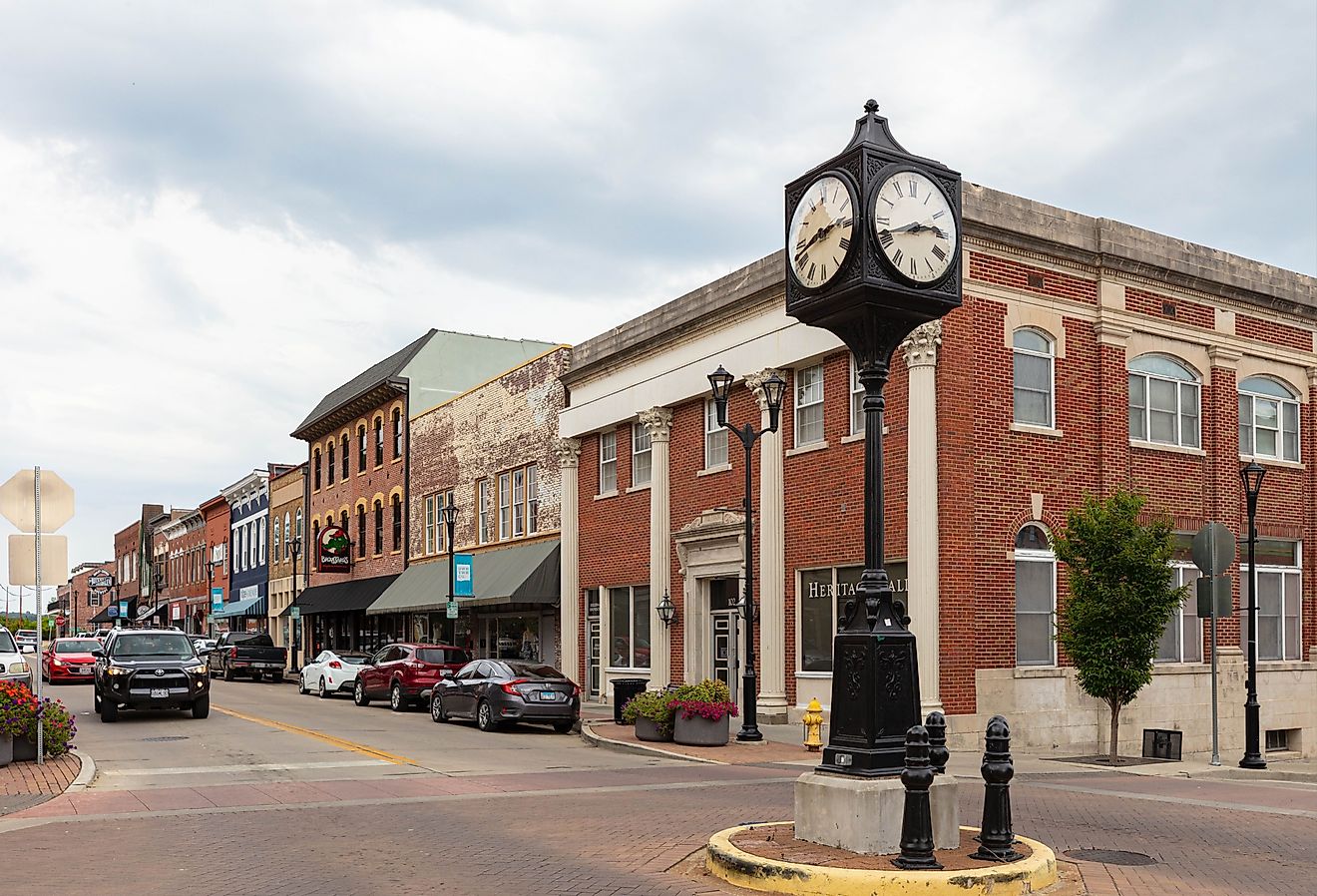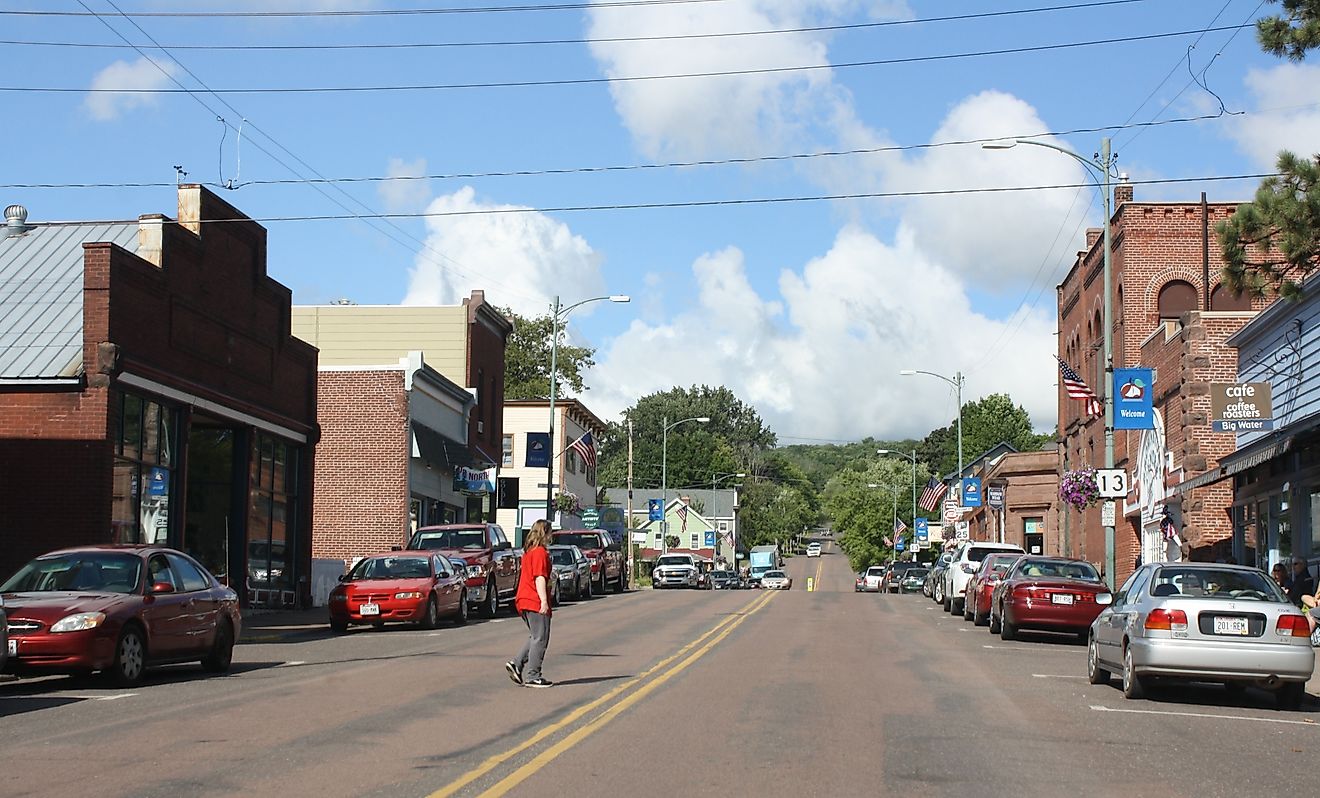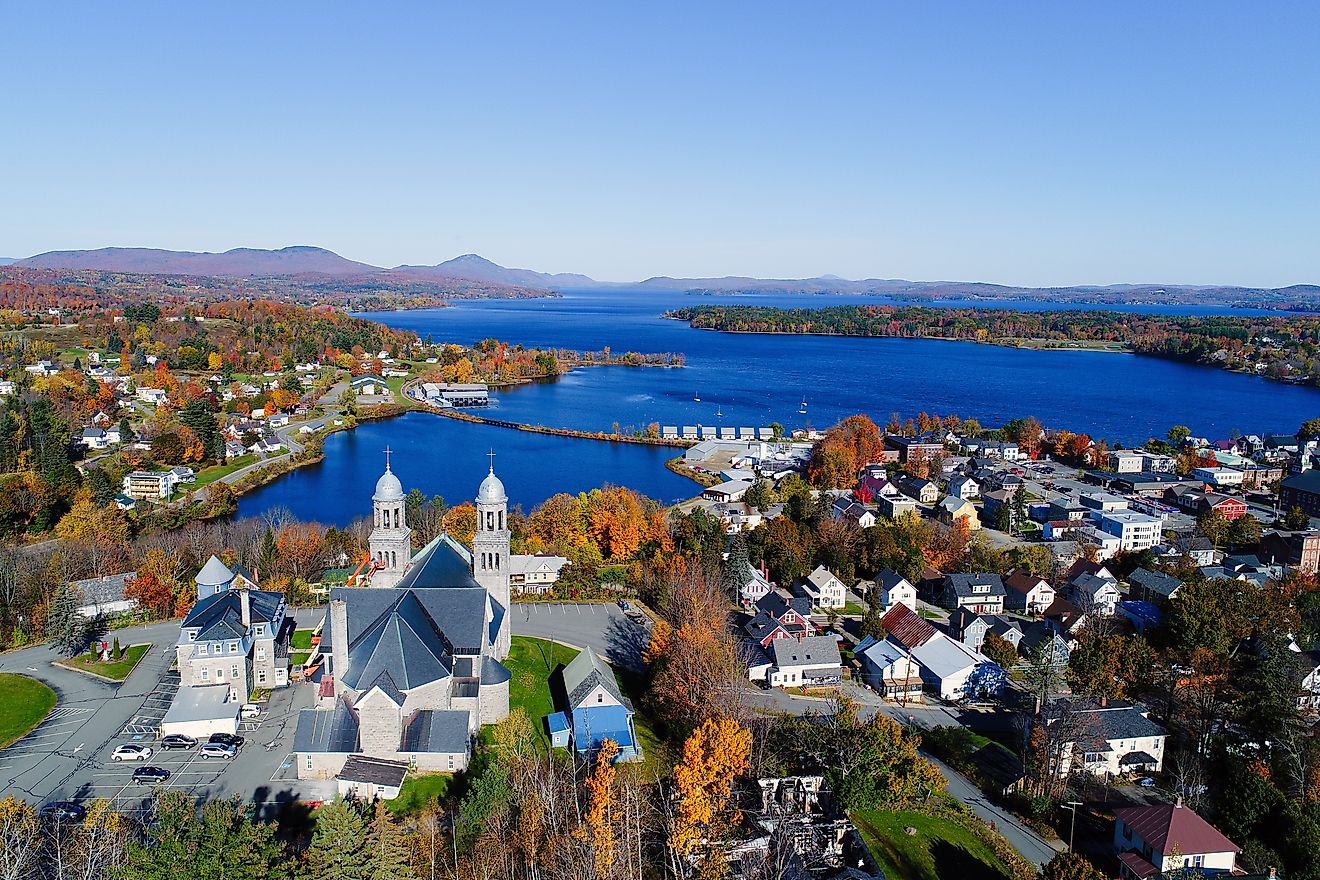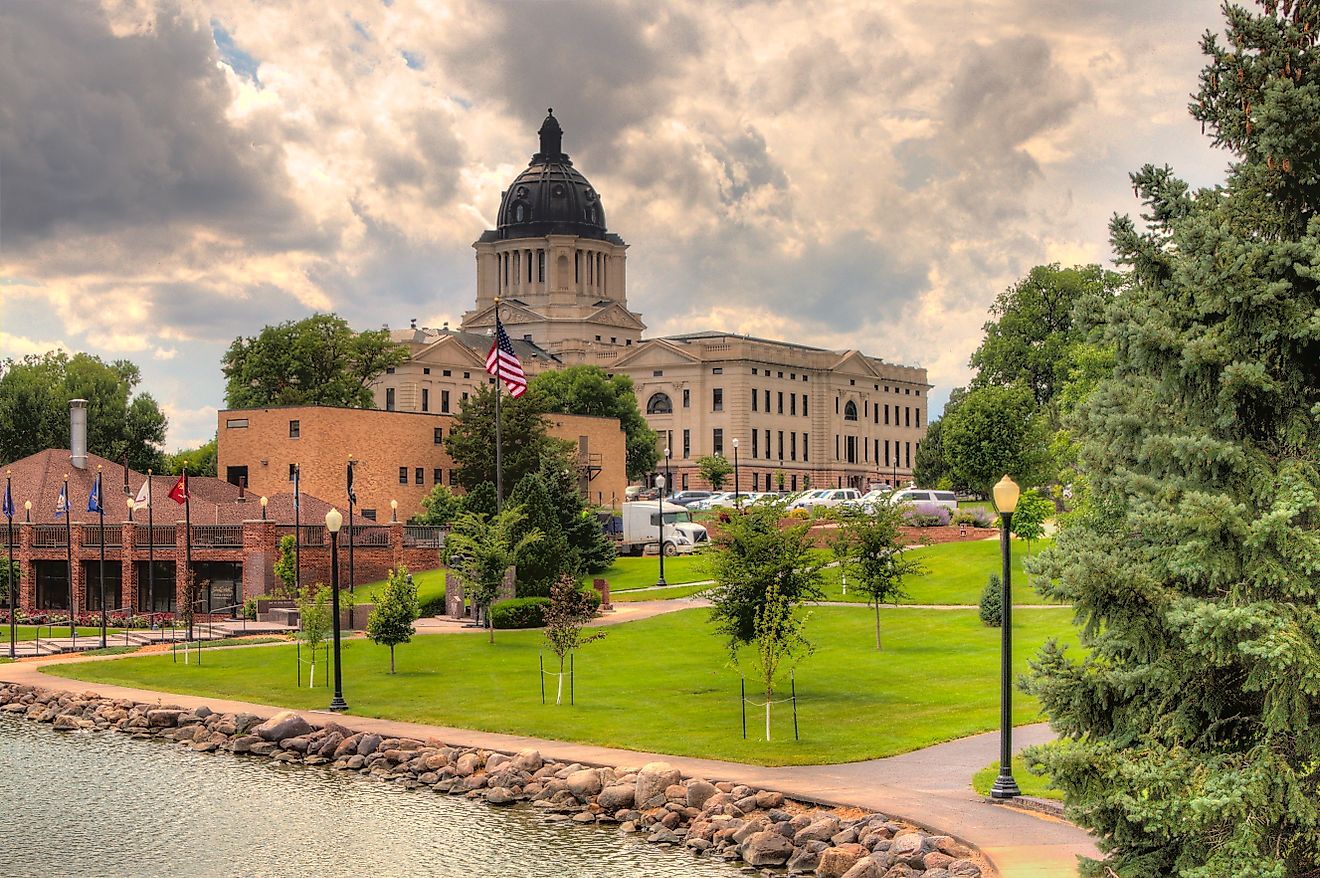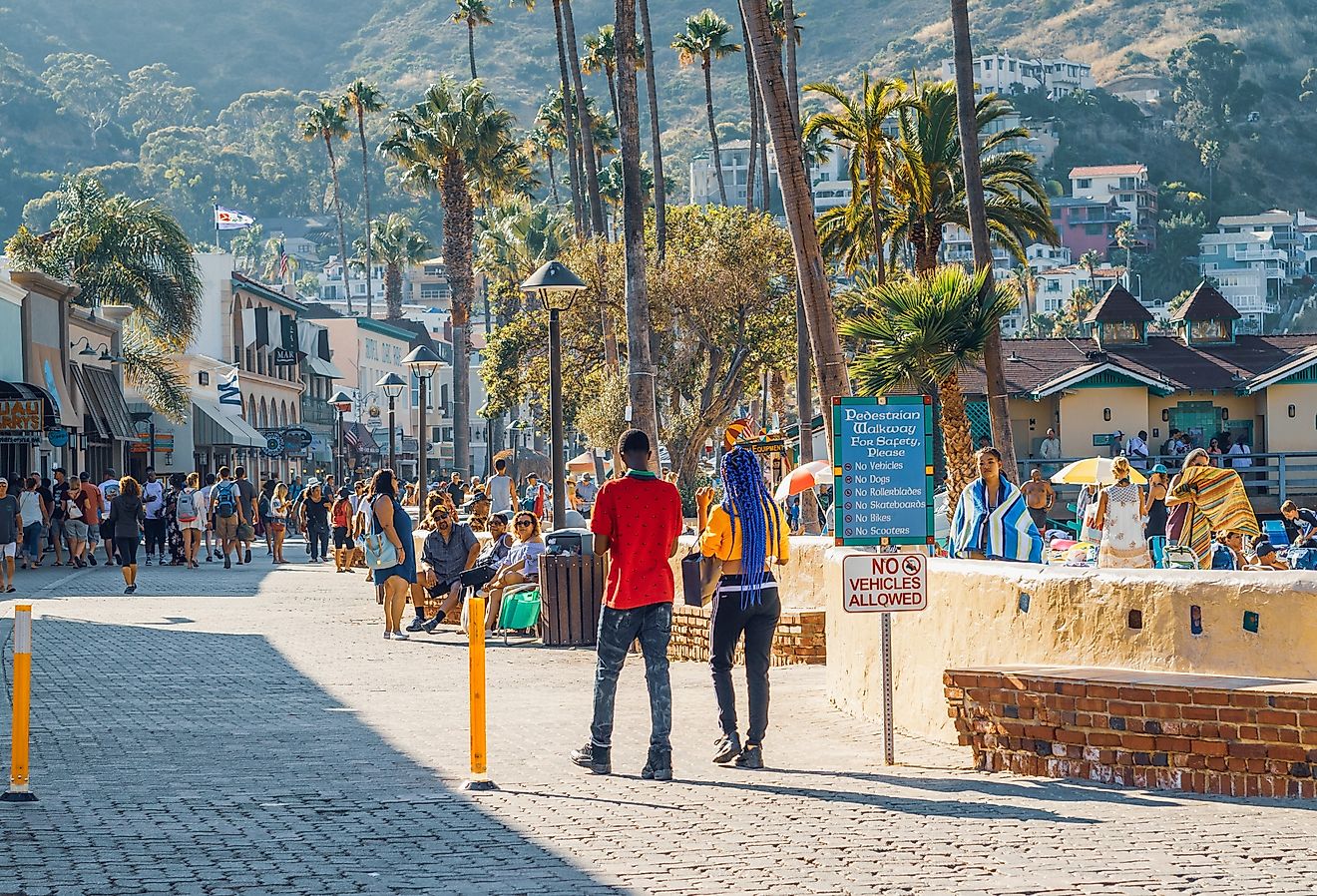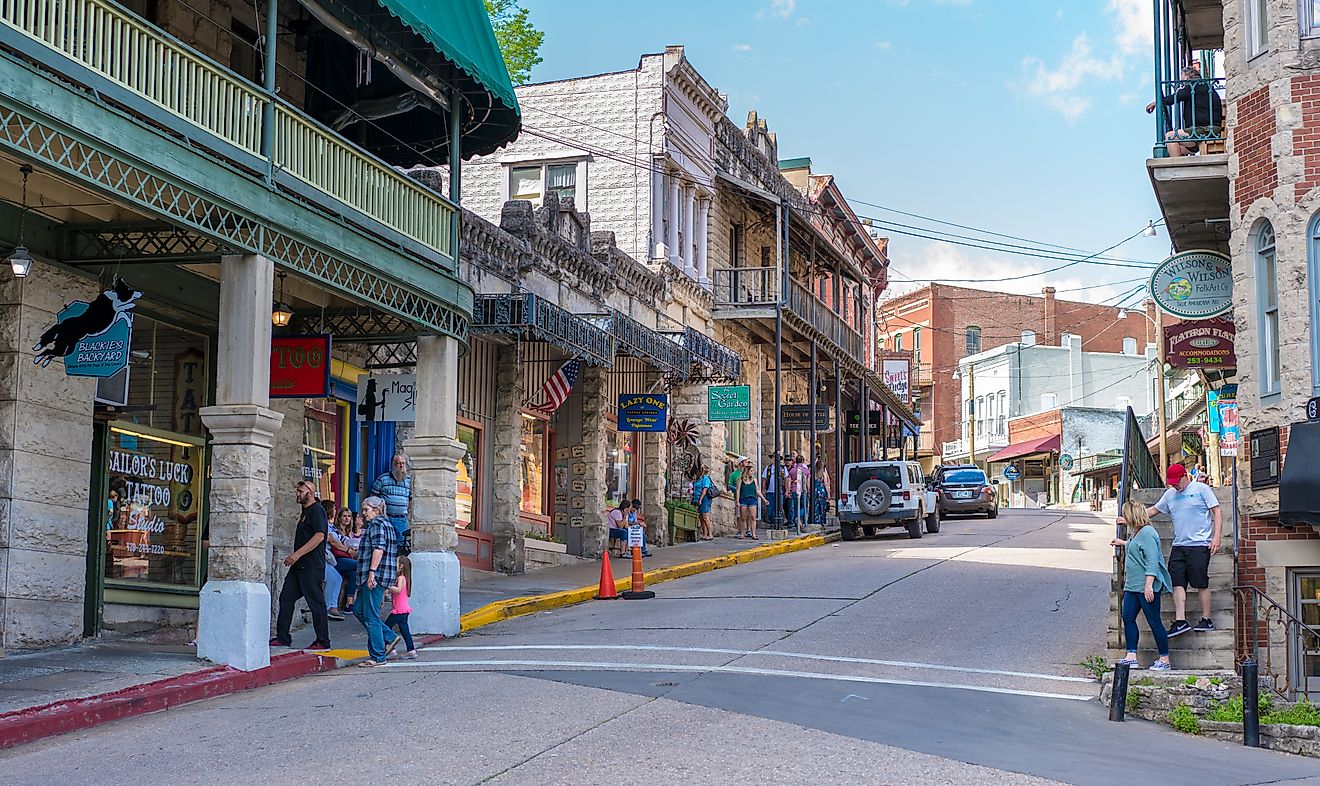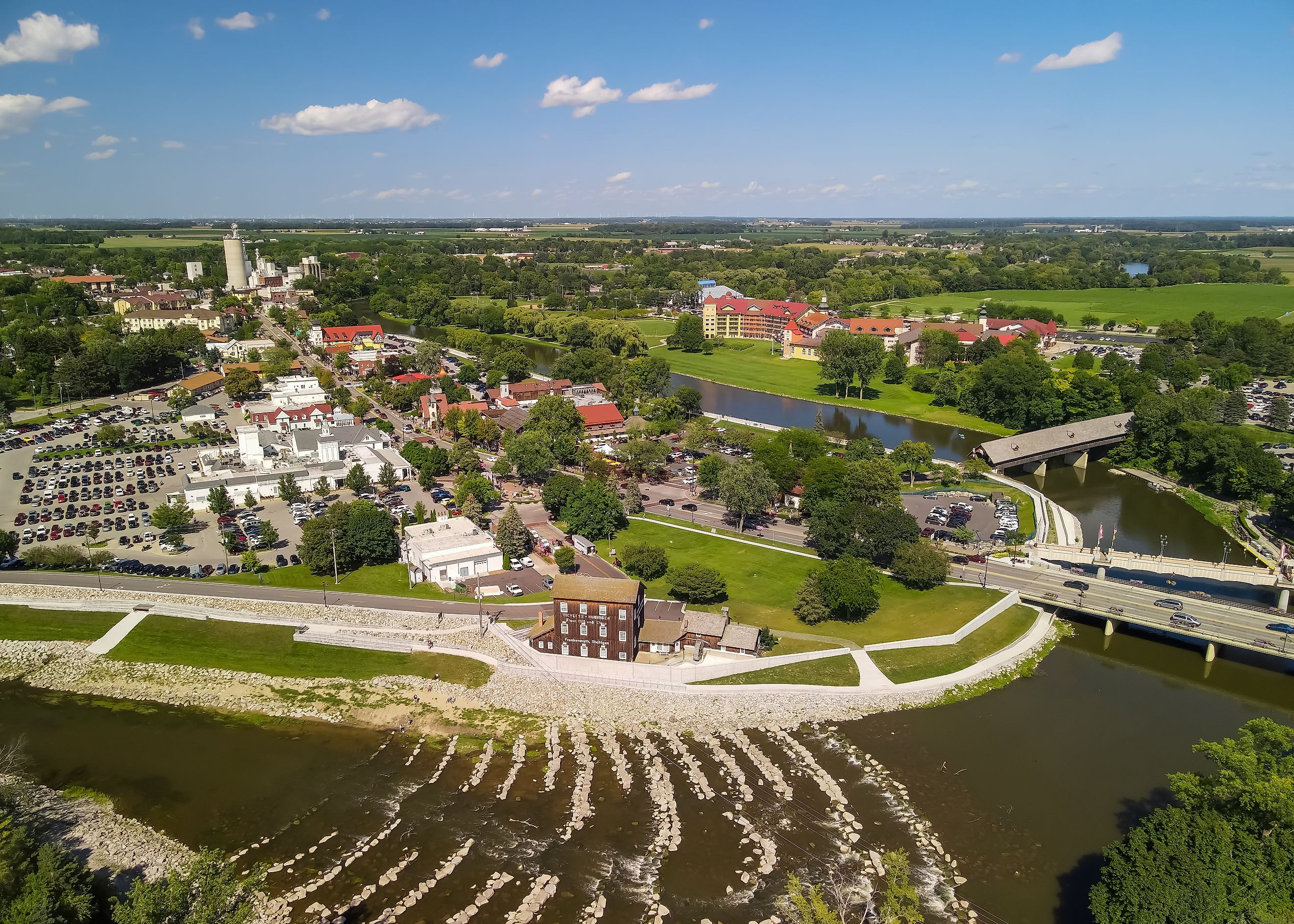
11 Oldest Founded Towns To Visit In Michigan
The state with America's longest, 3,288-mile freshwater coastline borders lakes Superior, Huron, Michigan, and Erie. This region amid the Great Lakes has been occupied for at least 12,000 years, and is dotted with towns full of rich history some of which have been highlighted here.
Michigan borders Indiana, Ohio, Wisconsin, and Canada and is split into the Upper Peninsula, with low hills covered by forests, and the mostly flat Lower Peninsula. The Upper Peninsula is 90 percent woodland, with forestry big in the state, and connects to "The Mitten" in the south via the five-mile Mackinac Bridge. Upon the first French arrival in 1618, they controlled the land until the mid-1700s, when England took over after the French and Indian War (1754–1763), despite the many Natives fighting alongside France. Michigan became a US territory in 1805, and settlers have been stampeding since 1825 over the new Erie Canal.
Birmingham
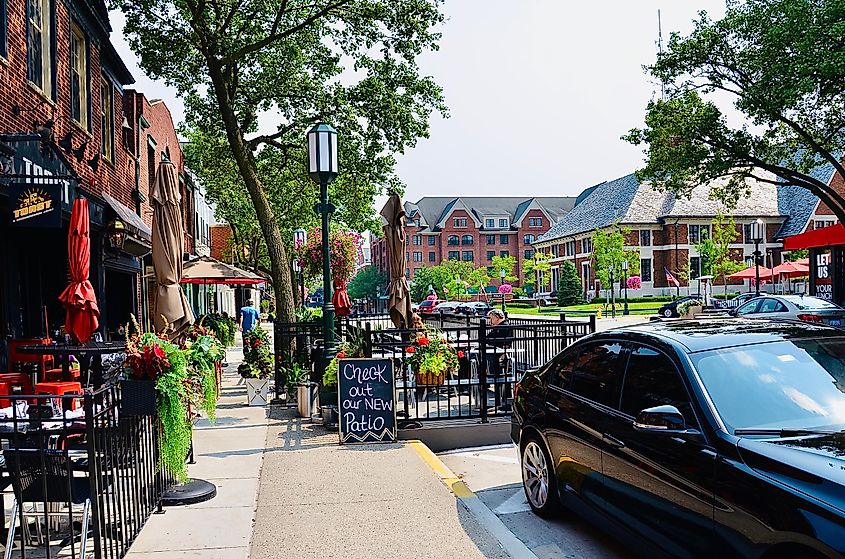
Birmingham was founded formally in 1818 and received city status by 1933 while still maintaining its small-town charm with just over 21,000 residents. Three entrepreneurs, who didn't want to focus on farming but had a vision for new businesses and a future for their families here, purchased 480 acres of wild land at the crossing of the Mississippi. It started with brick-making, blacksmiths, tanneries, and transportation, but most manufacturing companies left before the 1860s. This scenically old town was named after England's leading manufacturing city and largest industrial center, which Birmingham, Michigan, never panned out to become.
Evidently, Birmingham was fated to be an agricultural center that expanded into commercialism. The quintessentially thriving town soon attracted merchants, doctors, dentists, lawyers, newspapers, and small stores to start their own successful practices. Immerse yourself in the rural feel with modern amenities and stroll through history on display around the residential areas and a business district. Birmingham today continues to flourish as a multifaceted economy, where farms are subdivisions, and many prefer the small-town appeal while traveling to Detroit's booming motor industry for work.
Copper Harbor
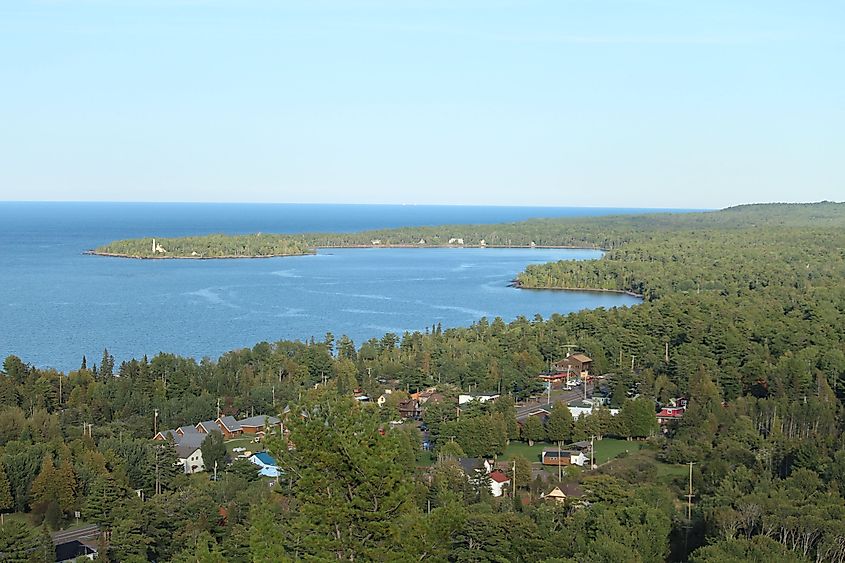
This tiny town with a year-round population of only about 120 is off the beaten path in a valley at the base of a spiny, rocky Brockway Mountain. The northernmost town with the purest, revitalizing air in the state is among its oldest settlements, dating from the first half of the 19th century, when it was settled at the tip of the Keweenaw Peninsula. Find pieces of British Columbia, Telluride, Idyllwild, Sedona, and even Key West in the sights and atmosphere of the village. Stop by the 140-year-old one-room schoolhouse and take an open vessel from the marina to visit the lighthouse from 1849 with a museum at the base.
The nearby Lake Superior lends a cool and pleasant climate even in winter, despite the abundant lake-effect snowfall. Wake up over coffee from Jamsen's Bakery, lunch at Harbor Haus Restaurant, and cool off over a pint at Brickside Brewery. Explore Fort Wilkins Historic State Park, Memorial Nature Sanctuary, and waterfront Rooks Park; these northern boreal forests are green and lush. Take in sunset views from Lake Fanny Hooe and choose to camp under the stars, where you may even see the aurora borealis during the summer. The Brockway Inn also awaits tired venturers, while the local 4th of July celebration comprises fun, food, and fireworks.
Frankenmuth
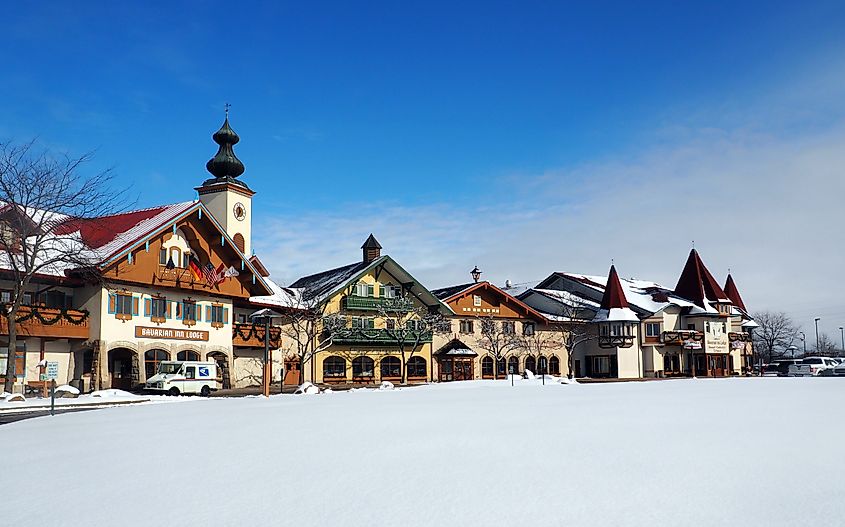
Frederick Wyneken, a German missionary, first pioneered the idea for this new community to resemble his own home while working in Indiana, Ohio, and Michigan. He asked all Lutherans in Germany to help through writing and shared the grief of living without pastors, churches, and schools. Wilhelm Loehe, an influential pastor in Neuendettelsau in the Kingdom of Bavaria who strictly adhered to church doctrines at a time of strong nationalism, answered his plea. His mission, still in existence, began by training teachers and pastors to work in the US; the first dual-purposed mission congregation in 1844 gave the German pioneers spiritual encouragement and taught the native Indians "How wonderful it is to live with Jesus."
They chose the site for the colony "Frankenmuth" along the Cass River in Michigan, where "Franken" stands for the Franconia province in Bavaria and "Muth" means courage. The original "courage of the Franconians" colony comprised fifteen volunteers, while another pastor moved from teaching in Oxford, England, to become this mission colony's pastor and leader. Today, the town teems with Bavarian sights, culture, and family-friendly attractions like an indoor water park. Come for festivities during the summer and for Christmastime at Frankenmuth Ice Rink and Zehnder's Snowfest. Appreciate the unique architecture any day, along with a local brew of authentic German beer. Explore the town via a 16-person pedal trolley and stop by Bronner's Christmas Wonderland, the world's largest of its kind, open most of the year.
Greenville
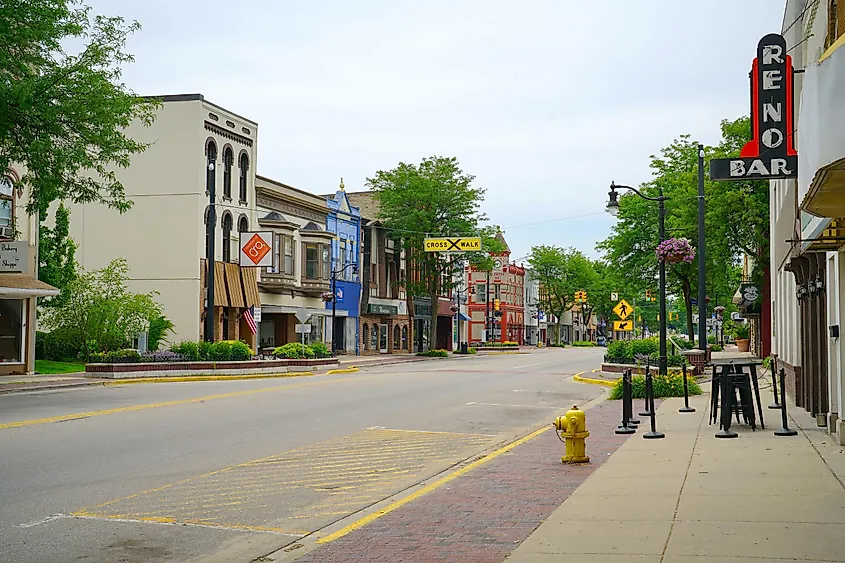
Greenville was founded in a naturally beautiful area housing the Native American Odawa tribe by John Green in 1844. The Danes established a post office in 1848, and the community was organized as a village in 1867. A small city since 1871, Greenville is replete with recreational and cultural activities throughout the historic downtown area. It was named after the founder, Green's Village, who built a sawmill by the river to draw in workers and their families.
The deeply rooted Danish heritage is evident in sights and architecture, while the annual Danish Festival celebrates all things Danish. Spend a morning at the Paddlers Market Estate with a rotating supply of fair-priced antiques, crafts, and more. Take a stroll along the shopping district and the local parks, which are as verdant as the town's name implies. Walk or bike along the various award-winning trails by the Flat River, or play golf and visit museums. There are also performing arts centers for the evenings and lakes for days by the water; Greenville will keep you occupied come rain or shine year round!
Mackinac Island
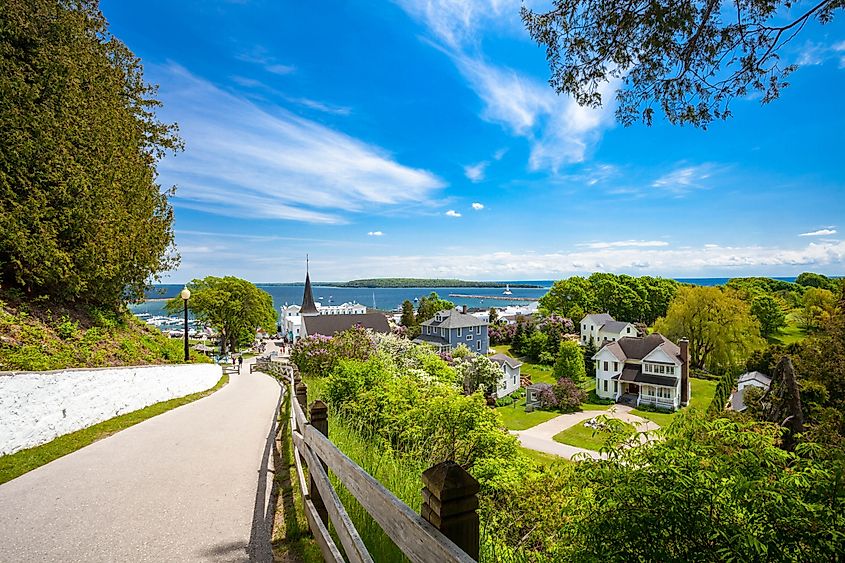
This sacred land for the Native Americans saw the first Pilgrims in 1620, fourteen years before the first European French explorers stumbled upon the island. They were traveling to the upper Great Lakes and called this area "New France," finally establishing the first Catholic mission after half a century. Mackinac Island also served to conquer the northern waterways and was excellent for trapping, fishing, and gathering for both the natives and the Europeans.
Sightsee the Missionary Bark Chapel today, honoring the original mission, and take a picnic stroll through the scenic Marquette Park, one of the state's best. Explore the small island by bike, including the pristine natural surroundings, and by horse-drawn carriage through the streets. Find an impressive number of historic B&Bs, cottages, and hotels, welcoming a stay since 1852, while the island's Native American Museum offers a glimpse back into the domestic life of the fur traders. Hike through the unreplicable beauty of Mackinac Island State Park and find Fort Mackinac, where you can even fire a cannon!
Marquette
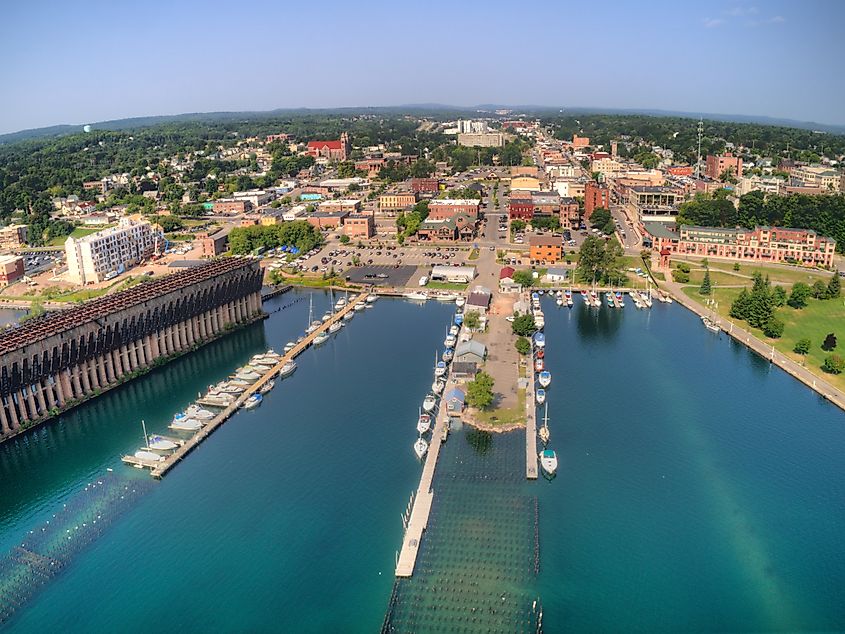
The French-founded "New Worcester" was named after the founder, Amos Harlow, and the leader's hometown in Massachusetts. It became the hub of a thriving mining region after discovering iron deposits in nearby Teal Lake. Today, the charming town renamed after the French explorer Jacque Marquette comprises small islands in Lake Superior: Middle Island, Gull Island, Lover's Island, Presque Isle, Pt. Rocks, White Rocks, Ripley Rock, and Picnic Rock.
Come in winter for alpine views while skiing down Marquette Mountain right in town, or seek heritage sights anytime at Marquette Branch Prison and Trowbridge Park, just west of town. The town's Northern Michigan University hosts home football games at Superior Dome. Sightsee this world's largest wooden dome over a game, among other regular public and private events that bring sightseers from all over.
Saugatuck
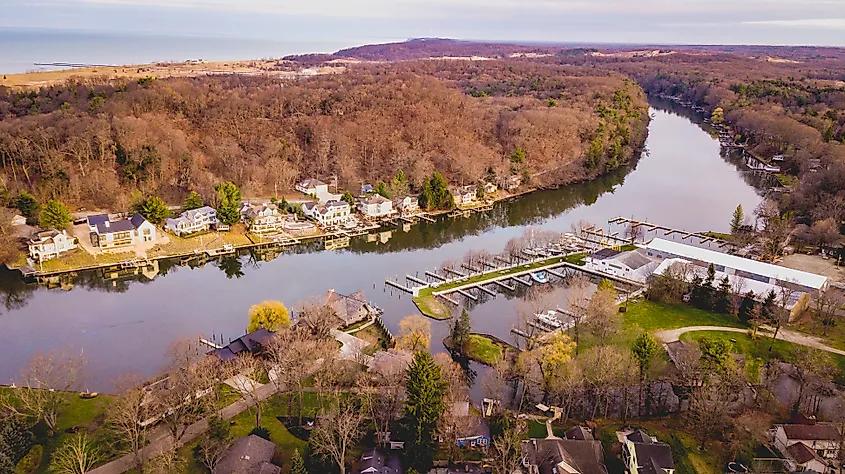
This area by the same name was an original summer retreat for the Pottawatomie Indians. Fur traders trickled in from the early 19th century on, and William Butler established a permanent settlement with his wife in 1830. The village lay along the flat land at the mouth of the Kalamazoo River. Thanks to abundant natural resources, Saugatuck was thriving by the mid-century with sawmills, barrel factories, and other wood products, helping rebuild Chicago after the Great Fire in 1871. The town avoided the fiery destruction in the region from the mid-to late 1800s, but after over-logging, it switched to fruit growing, built hundreds of ships, and welcomed ship captains for a respite. The railroad omitted the town and staved off urbanization, preserving pre-and post-Civil War Greek Revival and Italianate architecture.
Nature unfolds on the shores of Lake Michigan and the Kalamazoo River, with steep rolling dunes to the west, lush orchards and farms to the east, and Grand Rapids just to the northeast. The lovely town on Kalamazoo Lake is a summertime destination for water pursuits, never too crowded to enjoy paddleboarding, canoeing, kayaking, or rafting. Its beach scene is one of the state's best secrets, rated among the top world beaches. With under 1,000 locals, it is a tourist hotspot and an arts hub, settled in the middle of the Arts and Crafts movement. See various architectural styles, like the latter Arts and Crafts and Colonial Revival, and check out local works decorating galleries and B&Bs. Venture through Saugatuck Dunes State Park and the navigation structures at Saugatuck Harbor.
Sault Ste. Marie
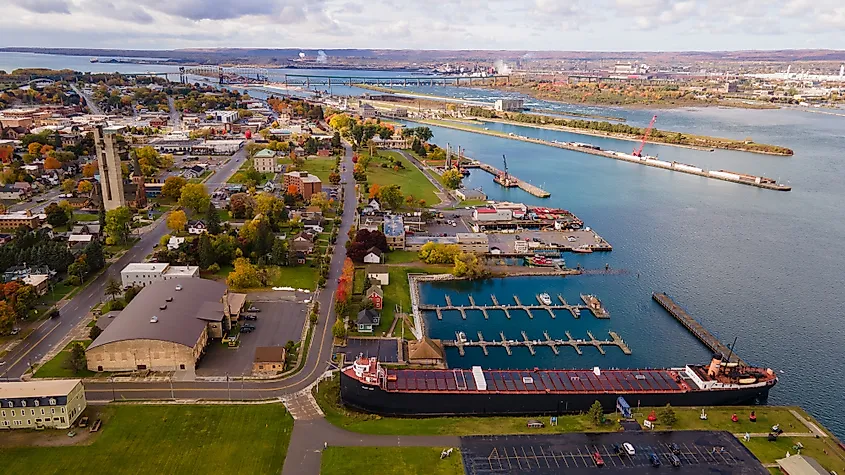
This town along the upper peninsula is the state's oldest-founded, with Jacques Marquette and other Frenchmen missionaries and fur traders arriving in 1641. They established a thriving fishing village by 1668, so Sault Ste. Marie just celebrated its 350th anniversary. The Ojibwe, who called the area Bahweting, meaning the gathering place, were the first official residents, but archaeological evidence shows human presence dating to 2000 BC.
The war in 1812 created the international boundary between the countries, and the town became a major trading artery between the United States and Canada and still serves as a destination for fishing. With its namesake city in Ontario, just across St. Marys in Ontario, Canada, they are referred to as the twin Saults. The Michigan city boasted threefold the size of its Canadian counterpart, but deflating to 14,000 residents today, the charming fishing town is a major tourist destination for natural scenery, history, and game fishing.
St. Ignace
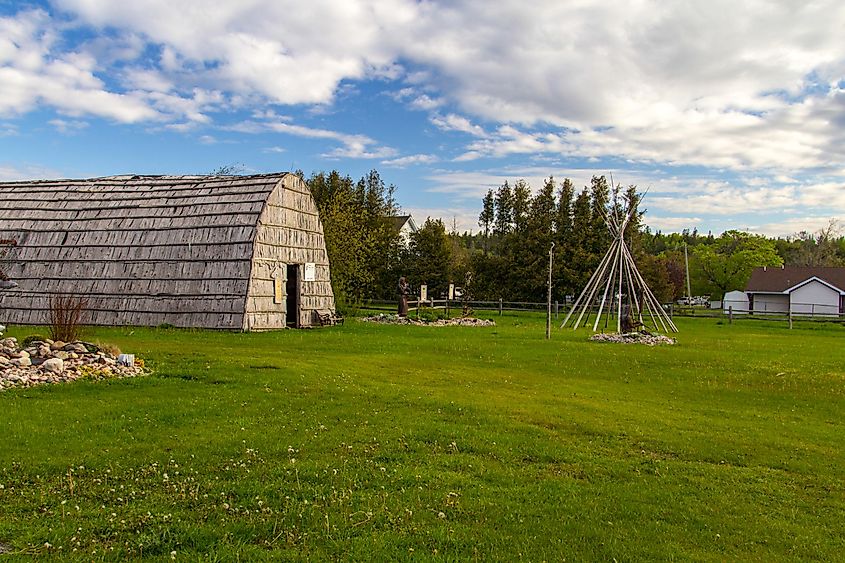
A preaching explorer, Jacques Marquette, founded St. Ignace, the second-oldest city in Michigan, in 1671. The quaint town was and remains a gateway for sightseers and road trippers to sightsee history and explore the upper peninsula. Over the next two centuries, fishermen and fur traders arrived, and by 1881, there was a rail-ferry service across the straits.
This drew in lumberjacks and smelters who wanted to mainstream iron and woodworking in the expanding township. The town had a different fate since these industries declined by the turn of the 20th century. Fishermen and tourism established a stronghold that still persists today. Clearly, nature played just the right game to secure a future for the town that couldn't find an identity. Come celebrate Mother Nature over seafood, summer and winter recreation, and dairy products at local markets from the surrounding farms.
Traverse City
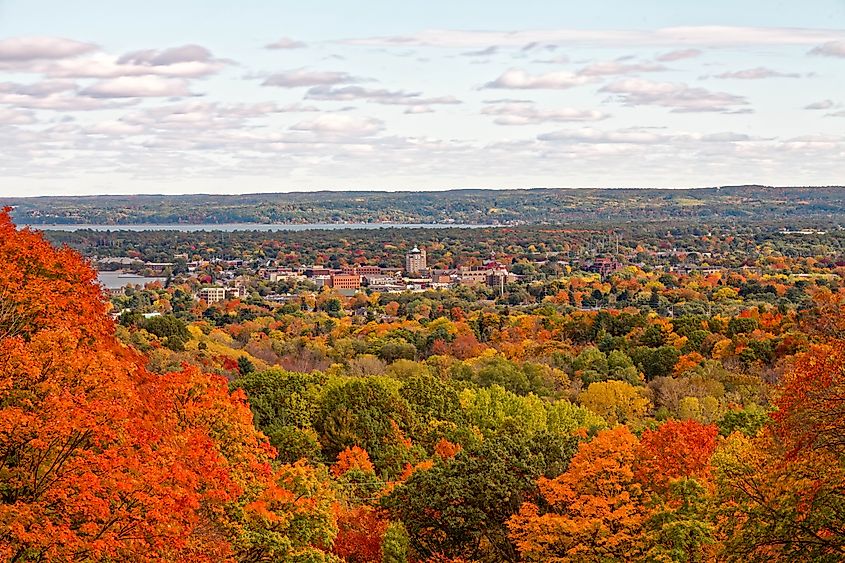
This town was named for Traverse Bay, which got its name from the French settlers who traversed here in the 18th century. Reverend Peter Doughtery founded Old Mission Peninsula in 1839, and eight years later, Captain Boardman from Illinois acquired land on the Boardman River to build a sawmill, drawing settlers to the colony. The mill expanded its operations after Hannah, Lay, & Co. bought it three years later, adding hundreds more workers to the community. The city and its industries thrived after the railroad was built in 1872, and the railroads to Grand Rapids and Indiana led to mass employment.
With only about 15,500 residents, the charming town was named the best small town to visit in the US in 2009. Escape from the real city to Traverse City for history and a quaint, friendly environment with feel-good pursuits. It is famous for producing tart cherries, so try different cafes for a slice of pie and join thousands of tourists each year for festivals and cherry-tasting events, like the annual Cherry Festival with half a million tourists, not for nothing.
White Pigeon
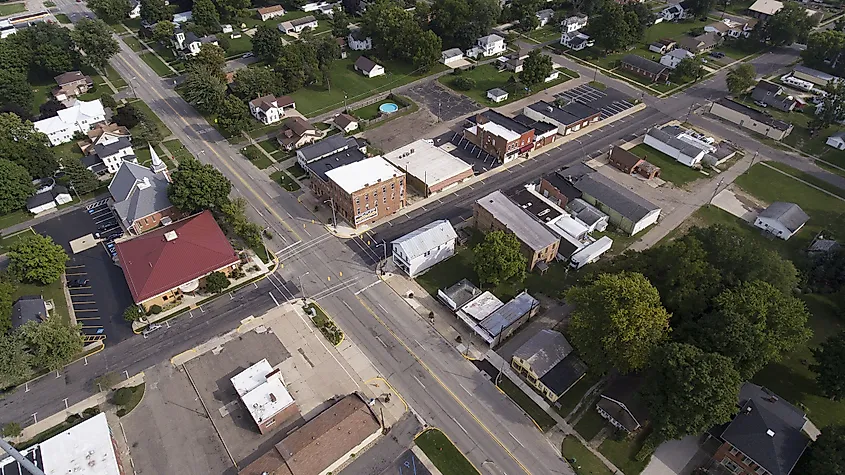
White Pigeon is the state's oldest village and was founded early on when the rest of the area was still undeveloped wilderness. It was incorporated in 1837 and named after Potawatomi Indian Chief Wahbememe, the "White Pigeon." Allegedly, he died after running nearly 150 miles from exhaustion upon hearing that his friends in the settlement were under attack while he was gathering in Detroit. Find his burial grounds in White Pigeon, which form part of the National Register of Historic Places.
The first hotel opened in the area in 1828, and a stagecoach operated on Chicago Road in 1831 and 1832 between Tecumseh, White Pigeon, and Niles. Visit White Pigeon for unique landmarks like the Mottville Camelback Bridge, which is the longest structure of its kind in Michigan, and head next door to Indiana to sightsee a fabulous rock concrete, the Elkhart Tooth Brick. A local dentist created this rock and embedded it with thousands of pulled human teeth to commemorate his dog.
Michigan is water-covered by over 40 percent, while Mount Arvon, at 1,979 feet, is the highest point in the state. Thousands of miles of shoreline lend Michigan a thriving tourism industry for summertime recreation. Sightsee the Sleeping Bear Dunes National Lakeshore's 400-foot dunes with a clear view of Lake Michigan and visit Isle Royale, a national park on Lake Superior.
Allegedly, the state was named for Lake Michigan, after a Native American word for "big lake." The fur trading heritage might have contributed to the "Wolverine State" moniker, or people from Ohio vainly referred to their Michigan neighbors as wolverines. The free state joined the Union in 1837 and saw Henry Ford build some of the first cars in Detroit, the "Motor City," before 1900.

